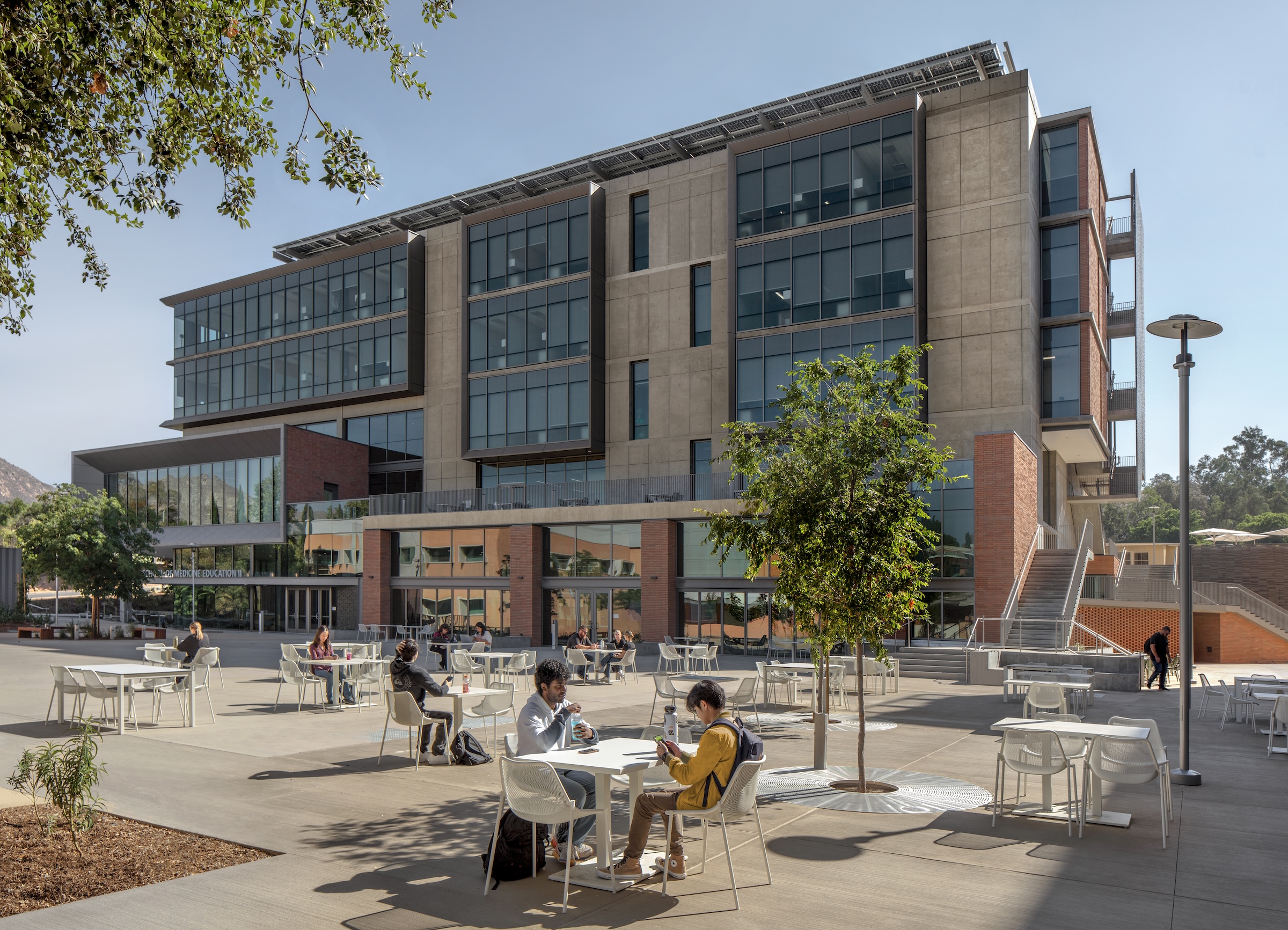The University of California, Riverside, School of Medicine has opened the 94,576-sf, five-floor Education Building II (EDII). Created by the design-build team of CO Architects and Hensel Phelps, the medical school’s new home supports team-based student learning, offers social spaces, and provides departmental offices for faculty and staff.
The learning spaces are located on the first three floors, while the administration and shared functions are housed on the top two floors. The building features interactive classrooms, 15 case-based group seminar rooms, variously sized study rooms, and additional study and amenity spaces.
The building includes materials, such as cast-in-place concrete, brick, terracotta, and glass, that are meant to be both beautiful and durable, lasting for generations.
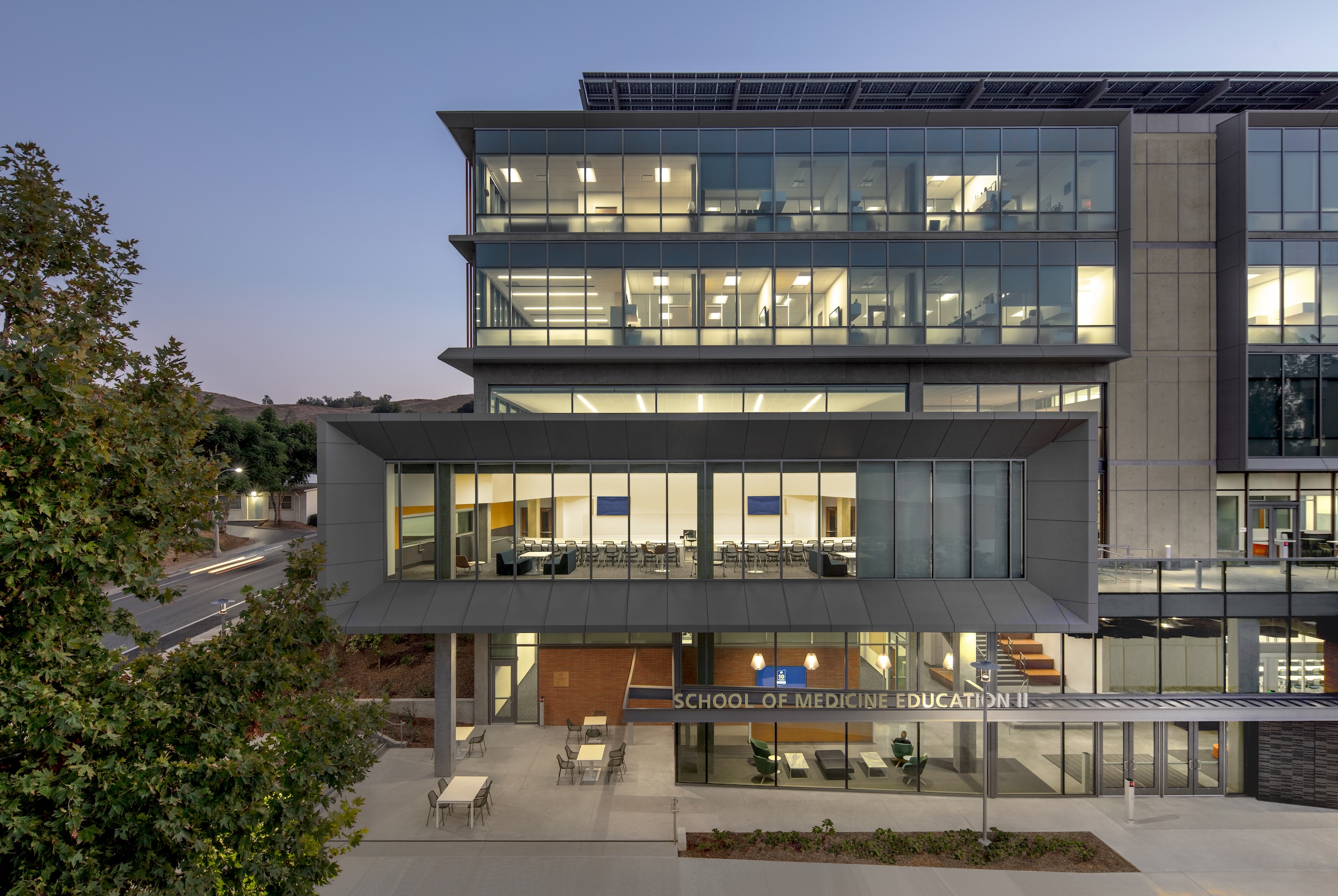
EDII’s design emphasizes transparency to help demystify medical education and welcome prospective students from diverse backgrounds. The use of transparency and shading leverages passive light, prevailing breezes, and solar heat gain. A rooftop solar array contributes to the building’s energy efficiency.
Each façade is optimized for the climate and for varying levels of sun exposure throughout the day. On the east façade, vertical glass fiber reinforced concrete (GFRC) fins create extended shadows and protect the interior from the harsh morning light. Painted perforated aluminum panels shade the east and west exit stairs as well as the south façade’s windows. The porous north façade features abundant glass and walls opening to the courtyard.
Located in a drought-prone region, the building restores the site’s natural vegetative conditions. The ground-level plaza connects the surrounding buildings.
Inside, a three-story perforated gypsum mural depicts an abstraction of orange groves, referencing the region’s history.
On the Building Team:
Owner: UCR School of Medicine
Architect/interior designer: CO Architects
Contractor: Hensel Phelps
Landscape architect: Spurlock Landscape Architects
MEP engineer: P2S, Inc.
Structural engineer, waterproofing, LEED consultant: Thornton Tomasetti
Civil engineer: Albert A. Webb Associates
Geotechnical engineer: Langan
Fire protection engineer: Woden Fire
Acoustics consultant: Arpeggio
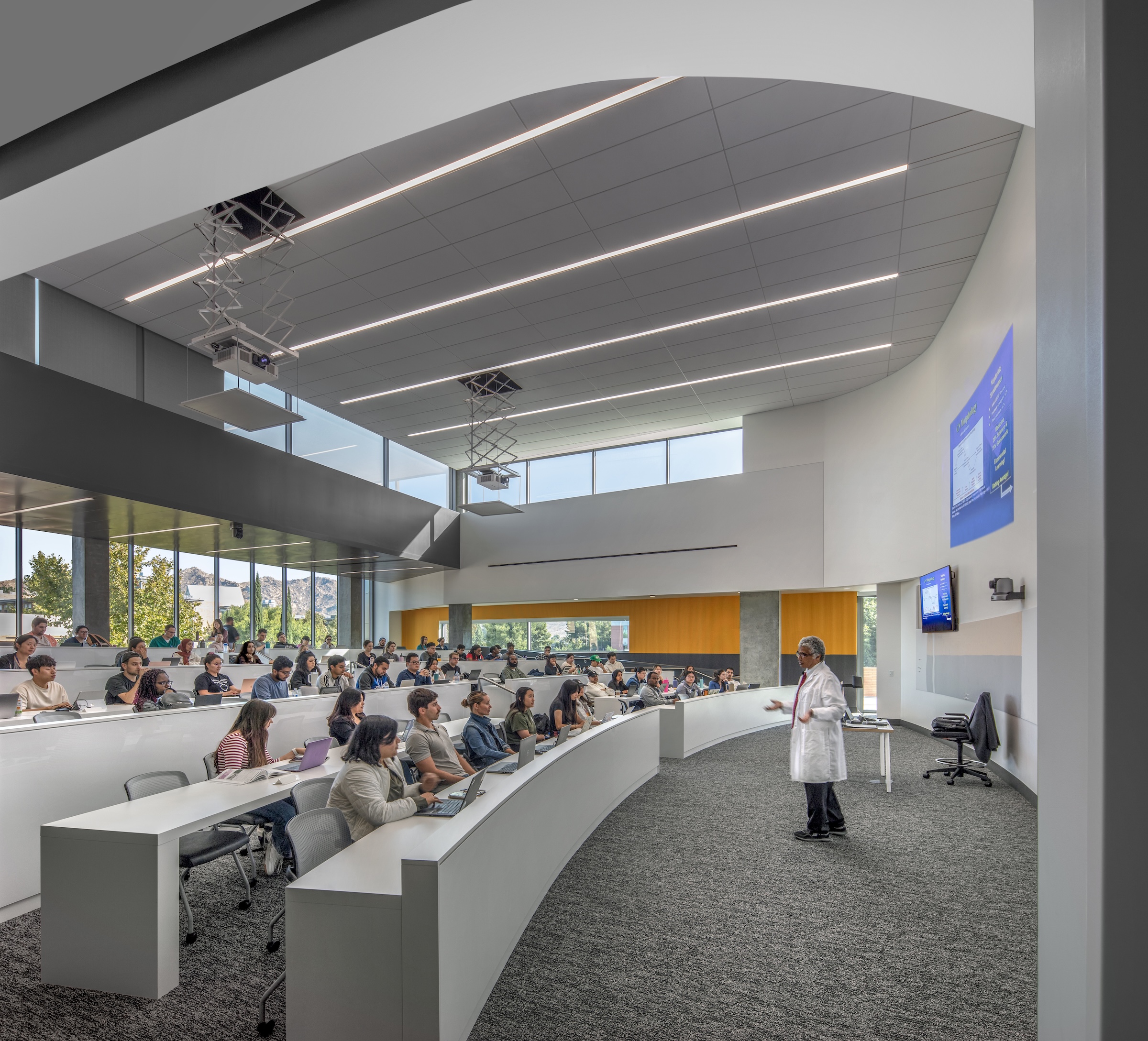
Here is the project essay from the design-build team of Hensel Phelps and CO Architects:
The School of Medicine (SOM) Education Building II (EDII) fulfills the mission of the University of California, Riverside (UCR), to train a diverse workforce of physicians to support the medically underserved Riverside County region of Southern California. The building by the design-build partnership of Hensel Phelps + CO Architects creates a new home for the medical school by incorporating a wide range of team-based student learning, social spaces, and departmental offices for faculty and staff into one 95,476-square-foot, five-story structure. Strategically located and highly visible on campus, the EDII amplifies the SOM’s identity as a forward-thinking medical school and showcases the mission and dedication of medical education to undergraduates and community members alike.
The design team and client shared the vision of crafting a building that supports its occupants and creates an environment to empower students throughout their academic experience and into their careers. The architecture utilizes transparency to demystify medical education, welcoming prospective students from diverse backgrounds to learn about the requirements and daily activities of medical students. EDII’s design is meant to be both beautiful and durable, utilizing materials—such as cast-in-place concrete, brick, terracotta, and glass—that fit within the campus context and will last for generations.
Each façade is optimized for the climate and levels of sun exposure throughout the day. Vertical glass fiber reinforced concrete (GFRC) fins on the east façade cast dramatic extended shadows while protecting interior spaces from the harsh morning light. Painted perforated aluminum panels—featuring custom patterns that resonate with the scale and pattern of the building’s brickwork—shade the east and west exit stairs, screening the stairs behind and creating a larger architectural feature on the façades.
The same panels are used on the south façade to shade individual windows. The staggered window placement is interspersed with brick infill stacked vertically in rows to signify the use of the brick as a façade skin, rather than as load-bearing elements. The north entrance face of the building is porous, both visually with abundant glass and structurally with walls opening out to the courtyard. Inside, a three-story perforated gypsum mural represents an abstraction of orange groves as a nod to the region’s history as the Orange Empire.
The materials palette provides flexibility for expansion over time and allowed construction details to be easily executed and built. During constructability review, the team modeled the different exterior connections and material intersections to digitally ensure the details were constructible and would stand the test of time with limited or no maintenance. Utilizing the design-build delivery method, the EDII was able to fit within a strict budget and a demanding schedule.
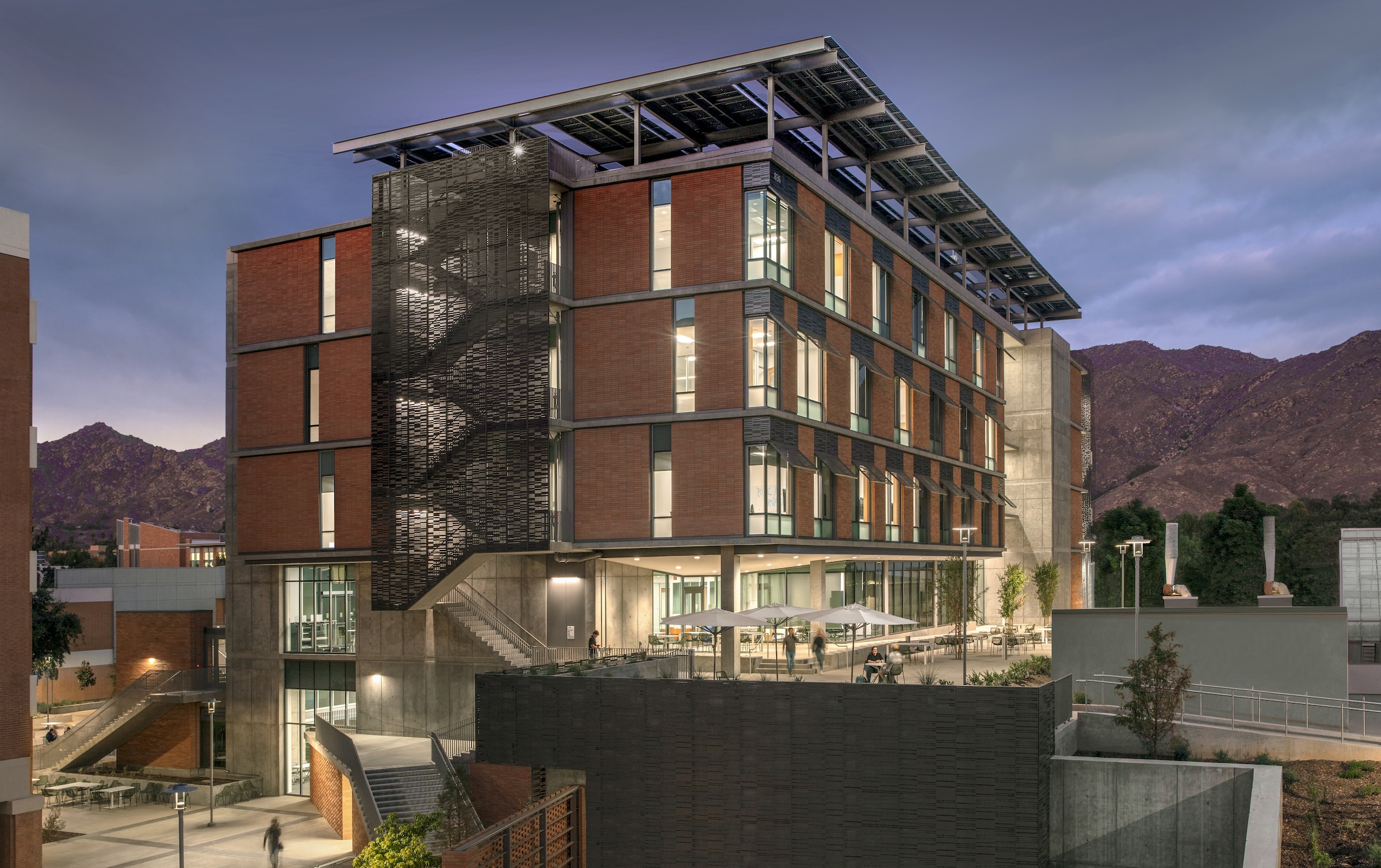
The EDII was designed with long-term sustainability in mind to ensure it will remain fully functional for generations to come while minimizing its carbon footprint. Located in a drought-prone region, the building defends and restores the natural vegetative conditions of the site. The EDII’s use of transparency and shading optimizes passive elements of light, prevailing breezes, and solar heat gain. The interiors and exteriors utilize durable, easy-to-maintain, and sustainable building materials, as well as low/no-VOC materials that promote healthy interior air quality and performance. A 200-kilowatt solar array on the roof contributes to its energy efficiency. The EDII will achieve LEED Platinum through its multiplicity of sustainability strategies in all building systems.
To maximize EDII’s lifespan, the design is flexible and adaptable to respond to growth as needs and pedagogy change. The building is organized with all the high-activity and student-centric learning spaces on the first three floors, which are more accessible and feature indoor/outdoor spaces, while administration and shared functions are located on the upper two floors. The EDII collocates most of the medical school’s staff, administrators, and faculty in the same building for the first time, creating greater efficiencies and moments for collaboration.
The medical school’s academic programs are supported by interactive classrooms, 15 case-based group seminar rooms, ample and various sized study rooms, and additional study and amenity spaces that work cohesively to integrate and support student engagement throughout the day and into the night. Throughout the building, the design team identified opportunities to enhance the program with high-profile spaces, such as an interactive tiered classroom that is universally accessible and features an abundance of daylight, state-of-the-art technology, writeup spaces, and informal lounge seating for breakout sessions.
Each level of the EDII capitalizes on the mild Southern California climate by providing outdoor environments that offer views and opportunities for collaboration, socialization, and reflection. An expansive plaza on the ground level connects and organizes the surrounding buildings, creating a new SOM Plaza for a wide variety of School of Medicine and campus events. EDII reinvigorates the area of campus in which it’s sited, creating opportunity for expansion to the south by developing a “Medical Walk”—a pathway that traverses from the health sciences library, across EDI (SOM’s first building), and through EDII, establishing an armature for future expansion.
Located on a constrained site, EDII uses the challenging terrain in innovative ways to create connections both externally to the campus and internally for users. Each grade level provides accessible opportunities to enter the building, maximizing the topographical nature of the site. By embracing the site’s challenges, EDII establishes meaningful and varied campus interfaces along all sides of the building. The design enriches the campus experience and encourages engagement with the larger campus and community of Riverside.
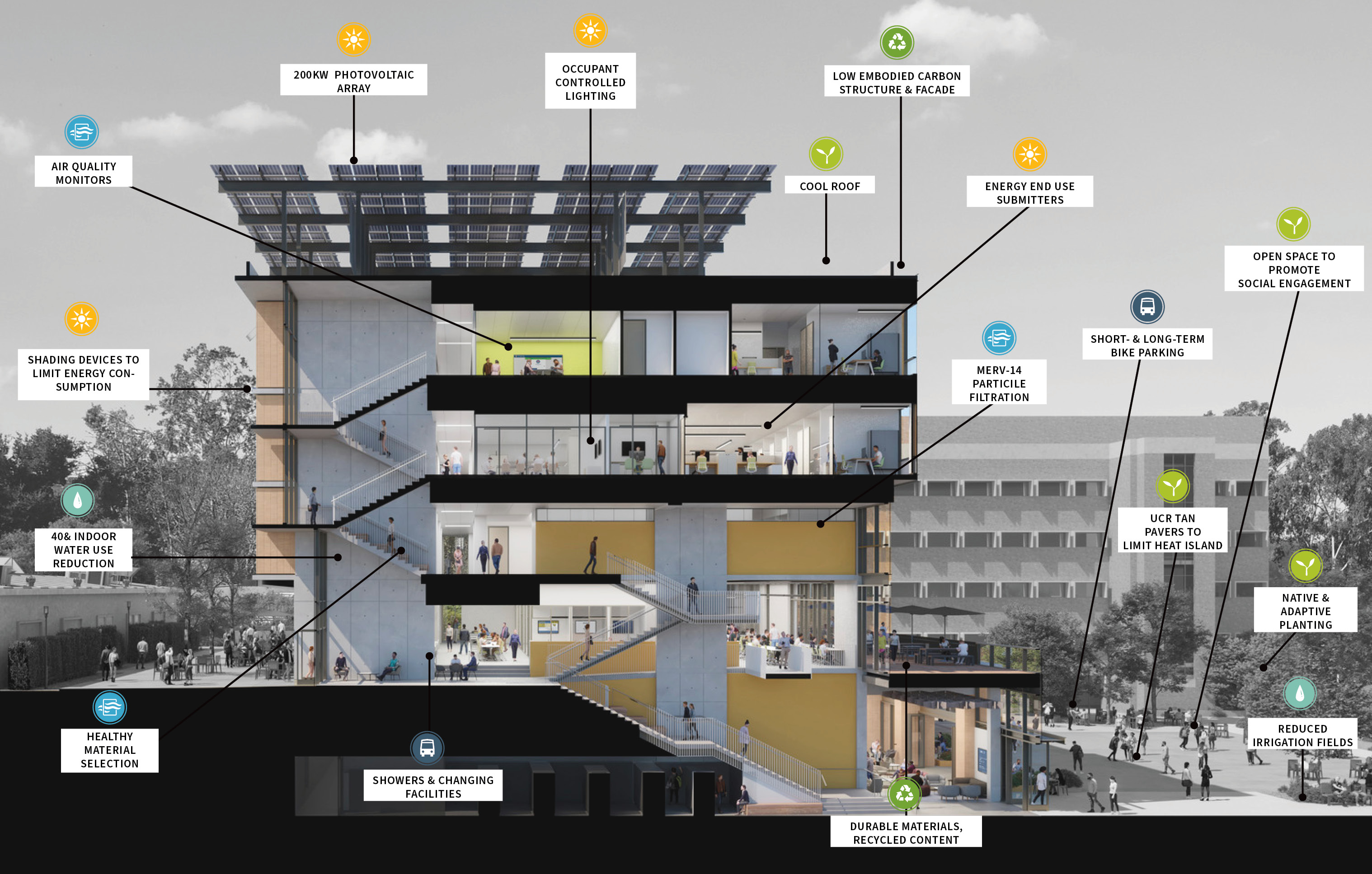
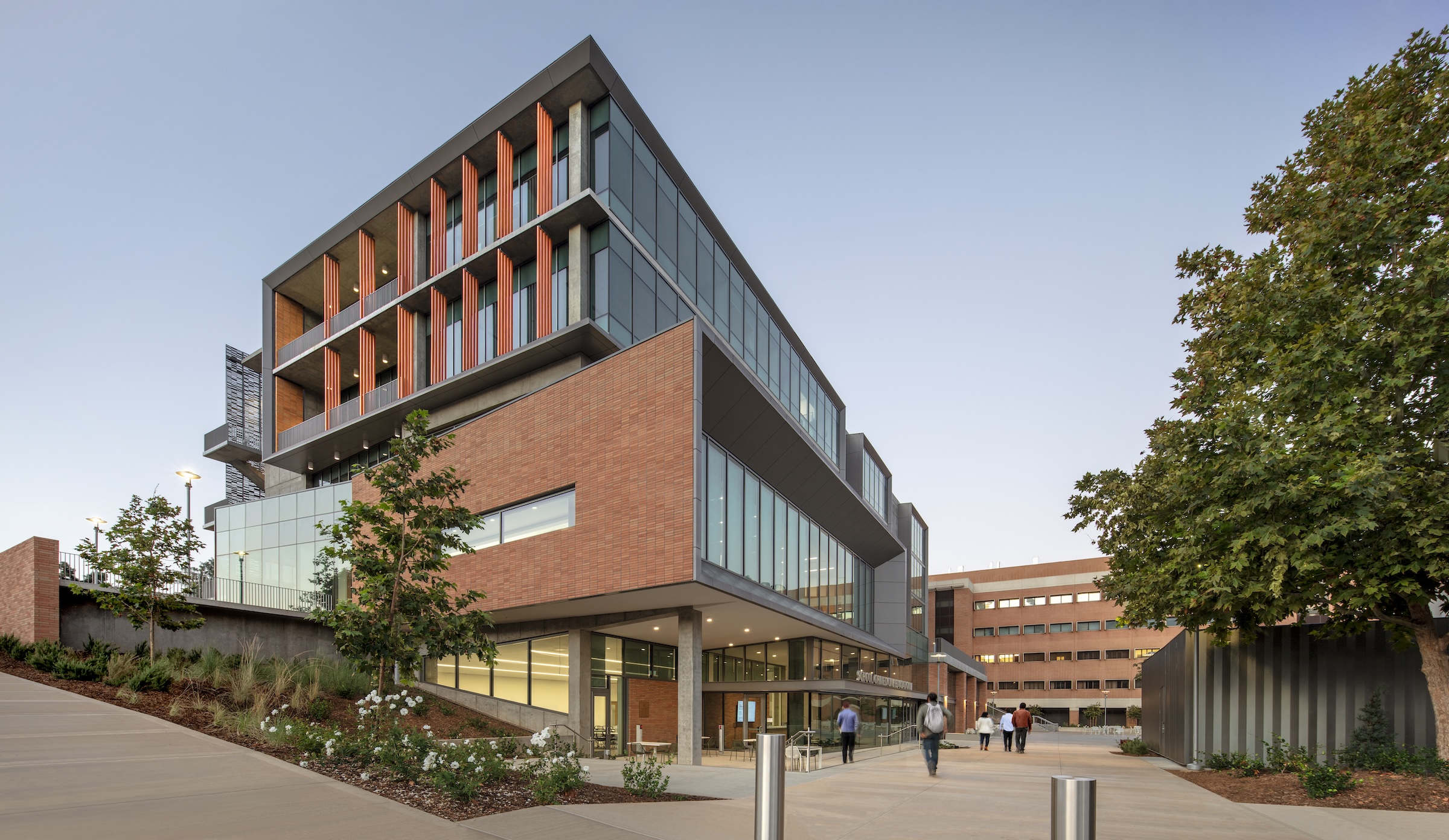
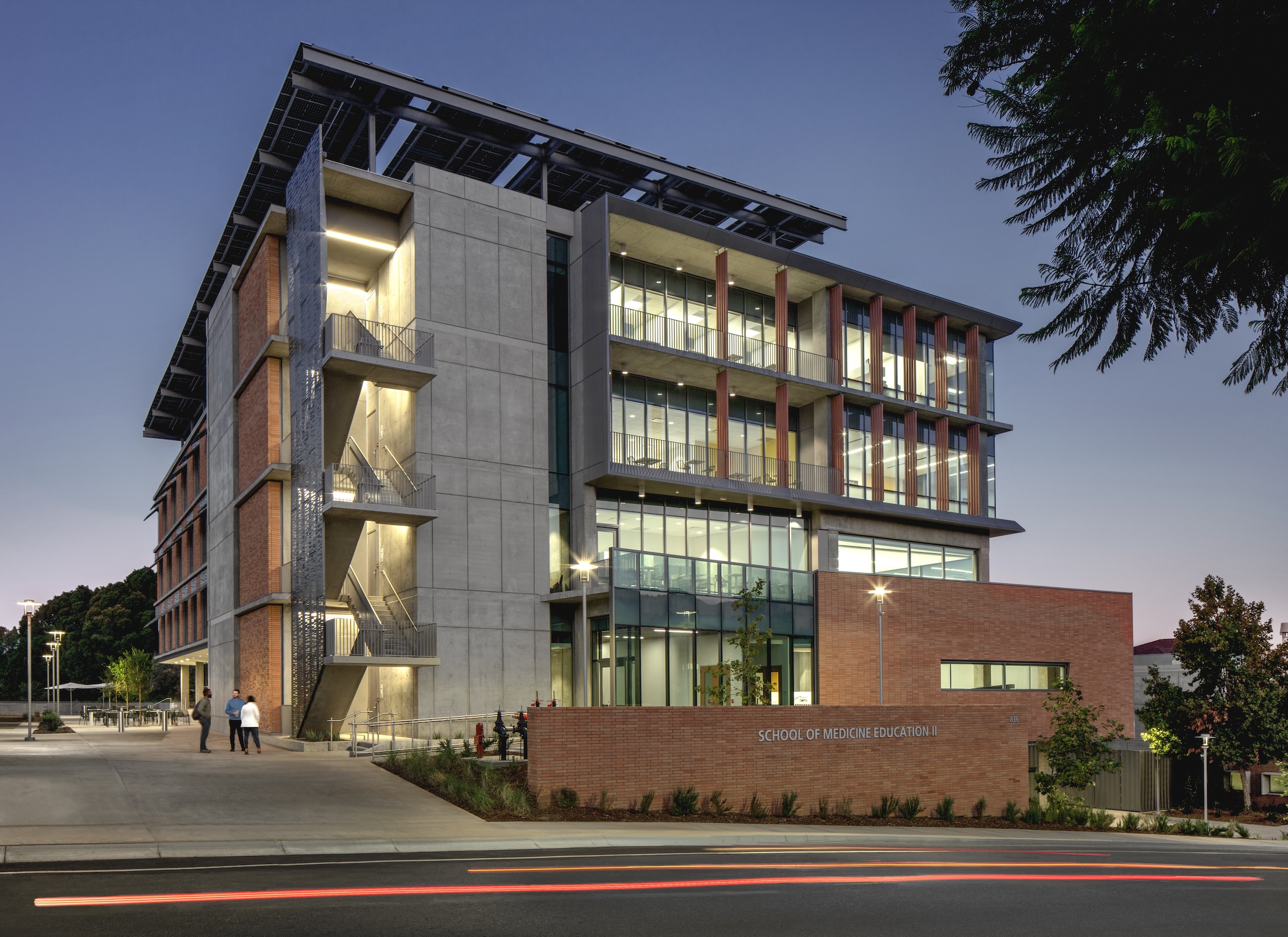
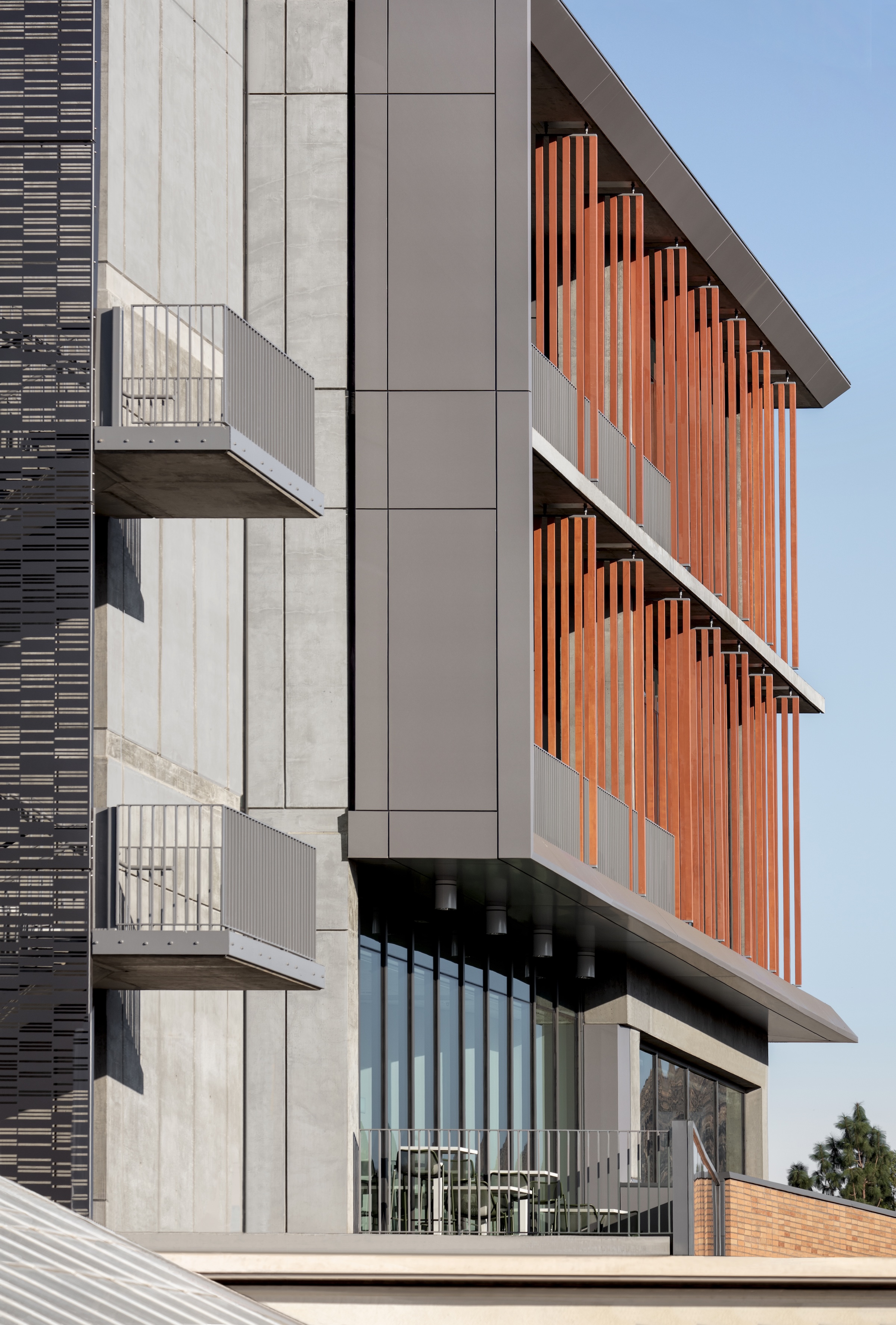
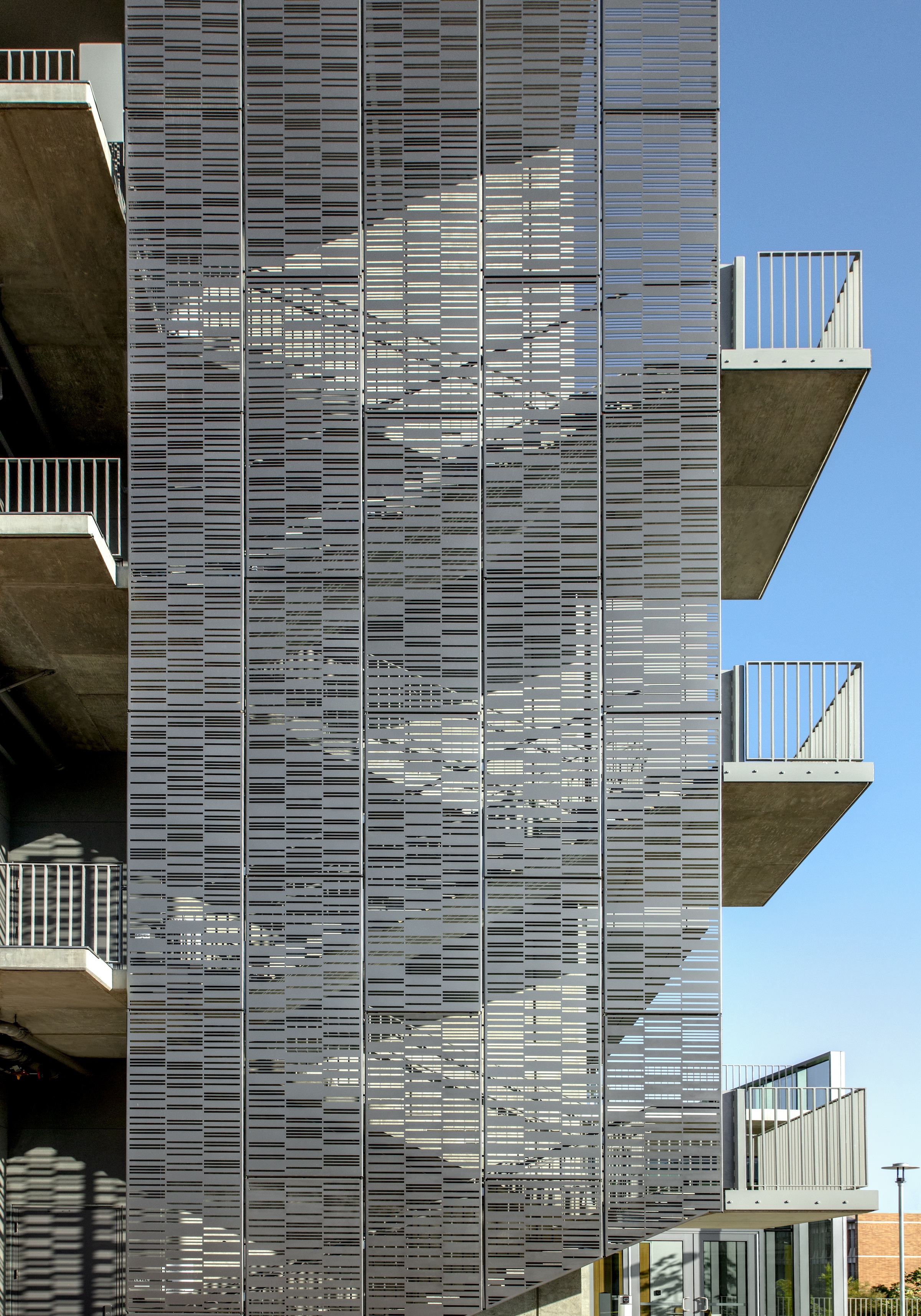
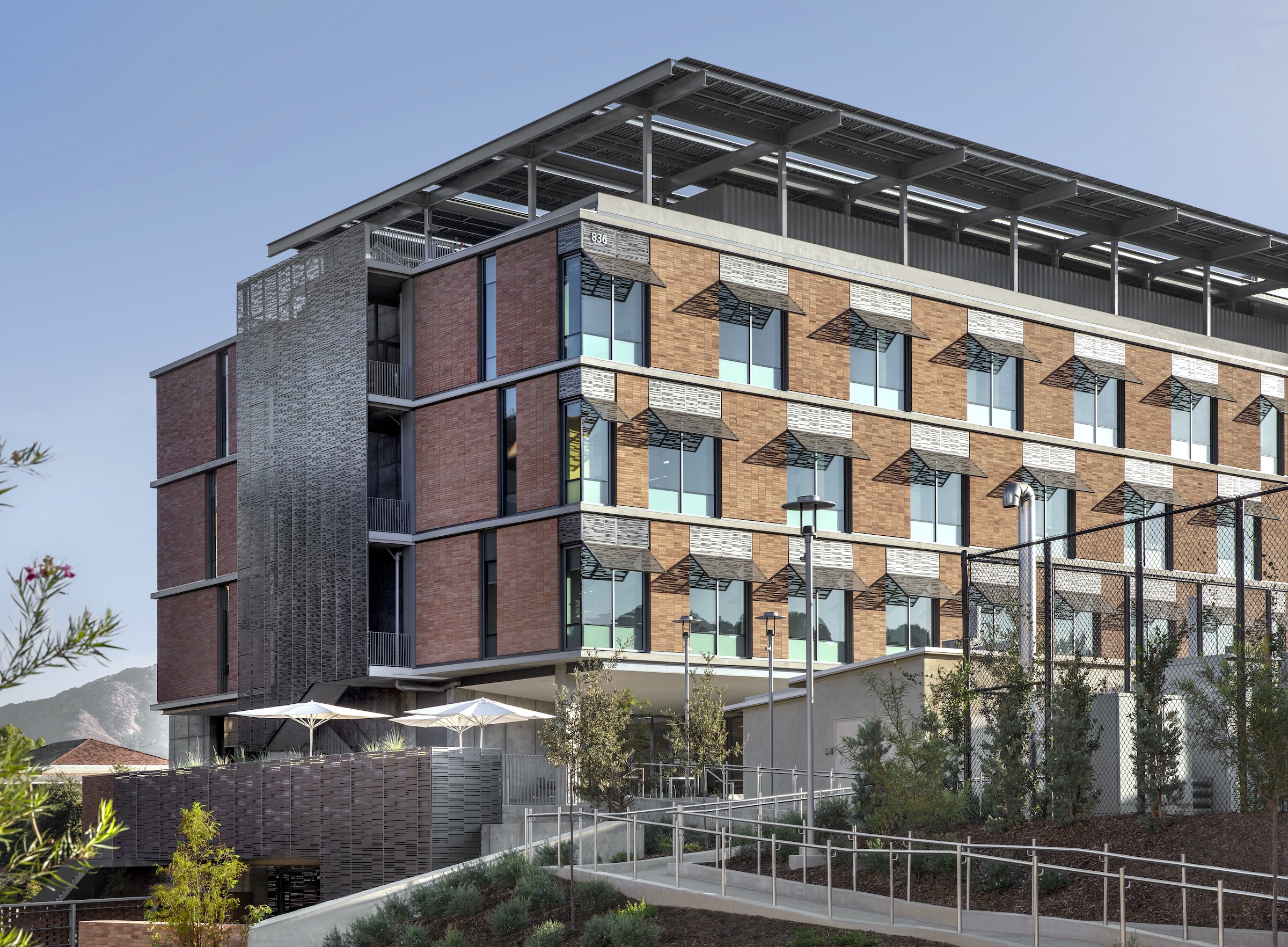

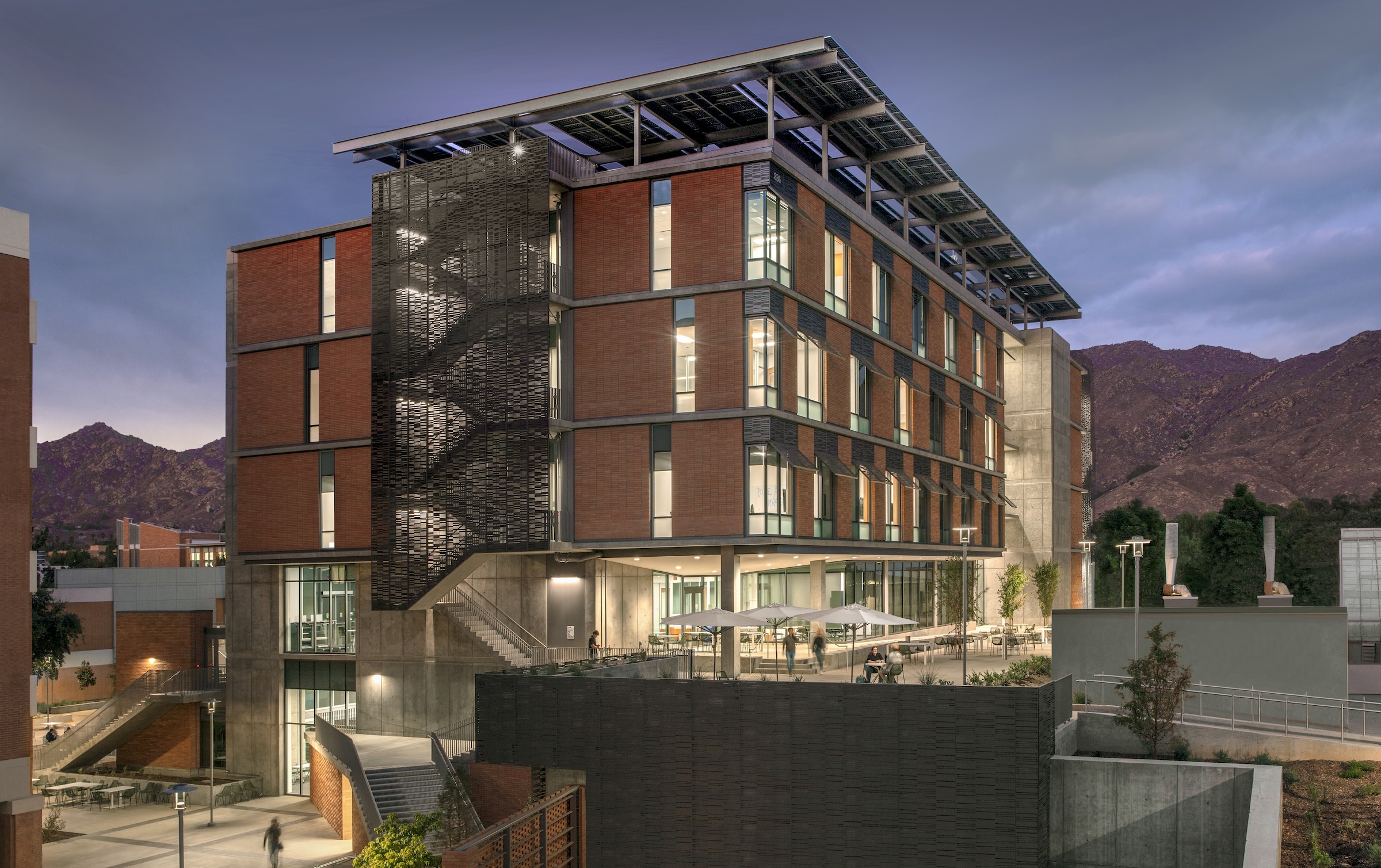
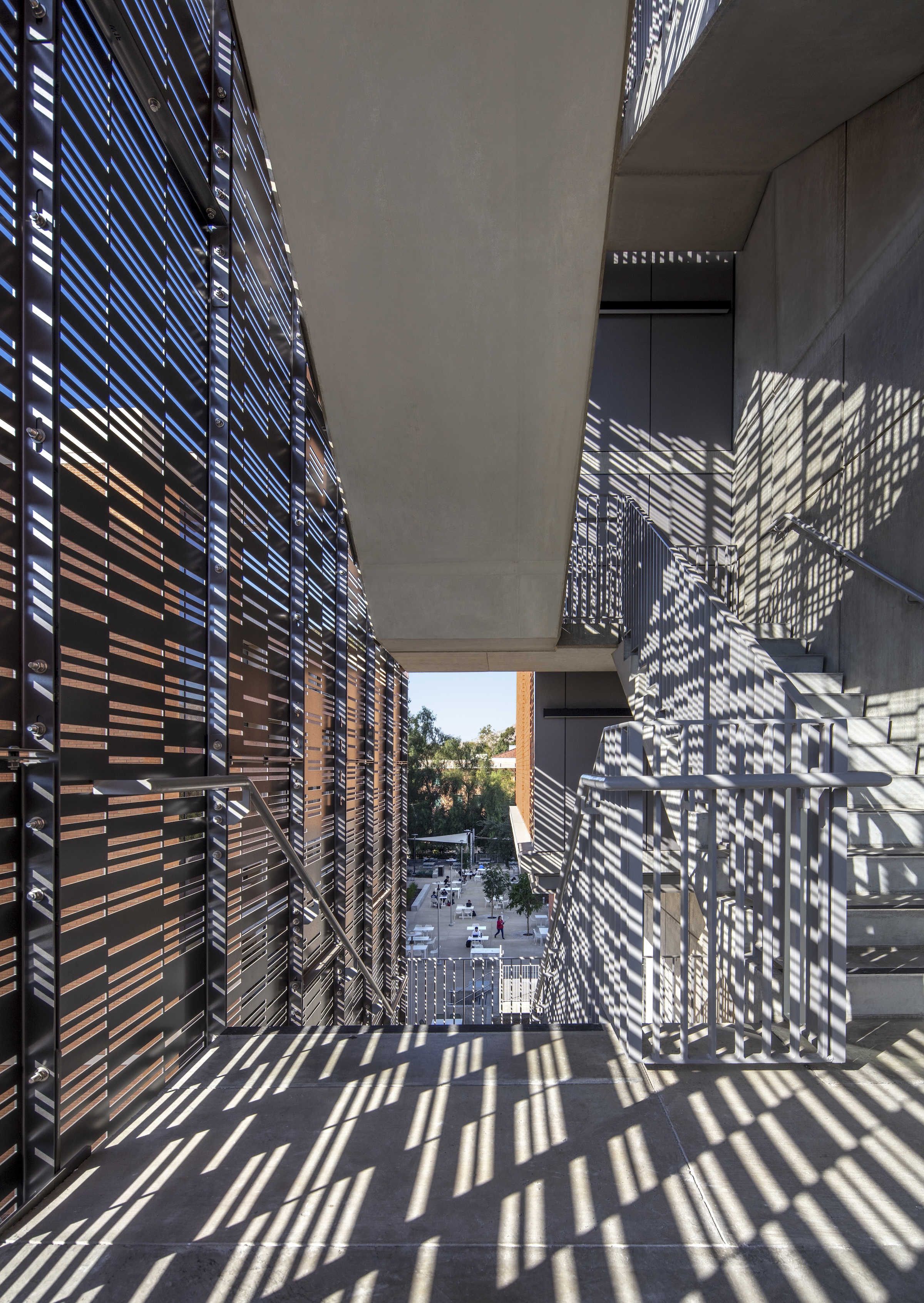
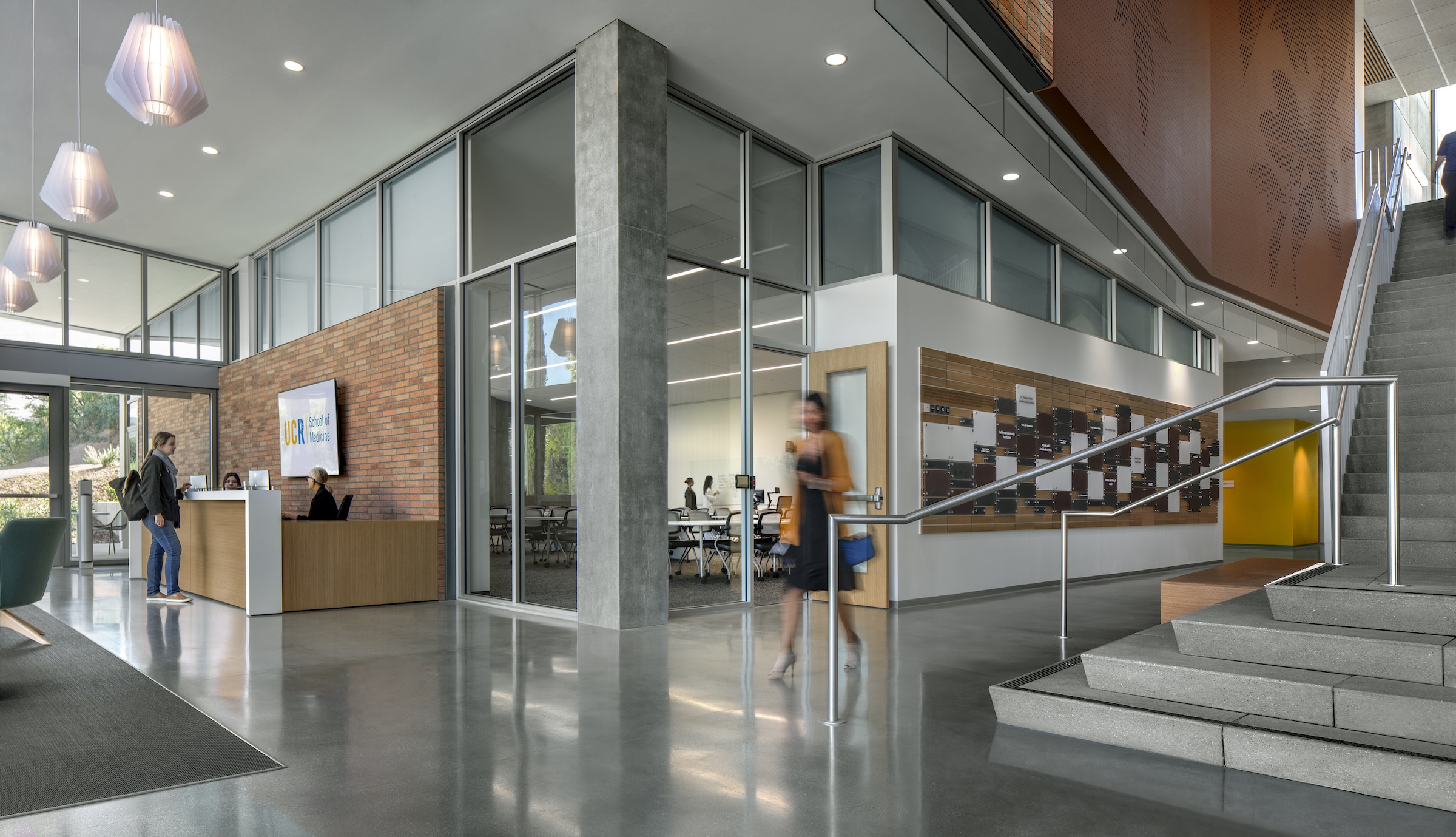
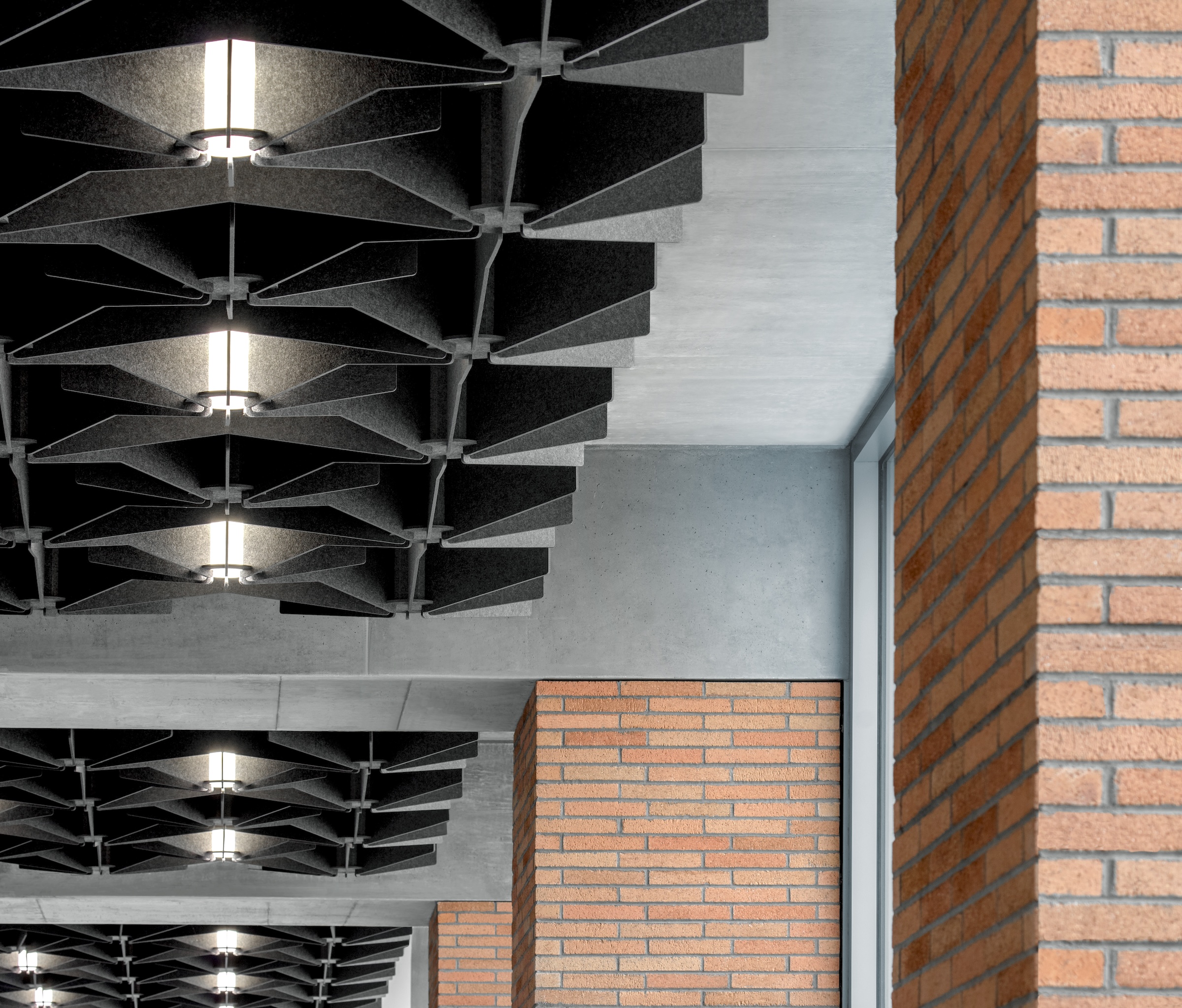
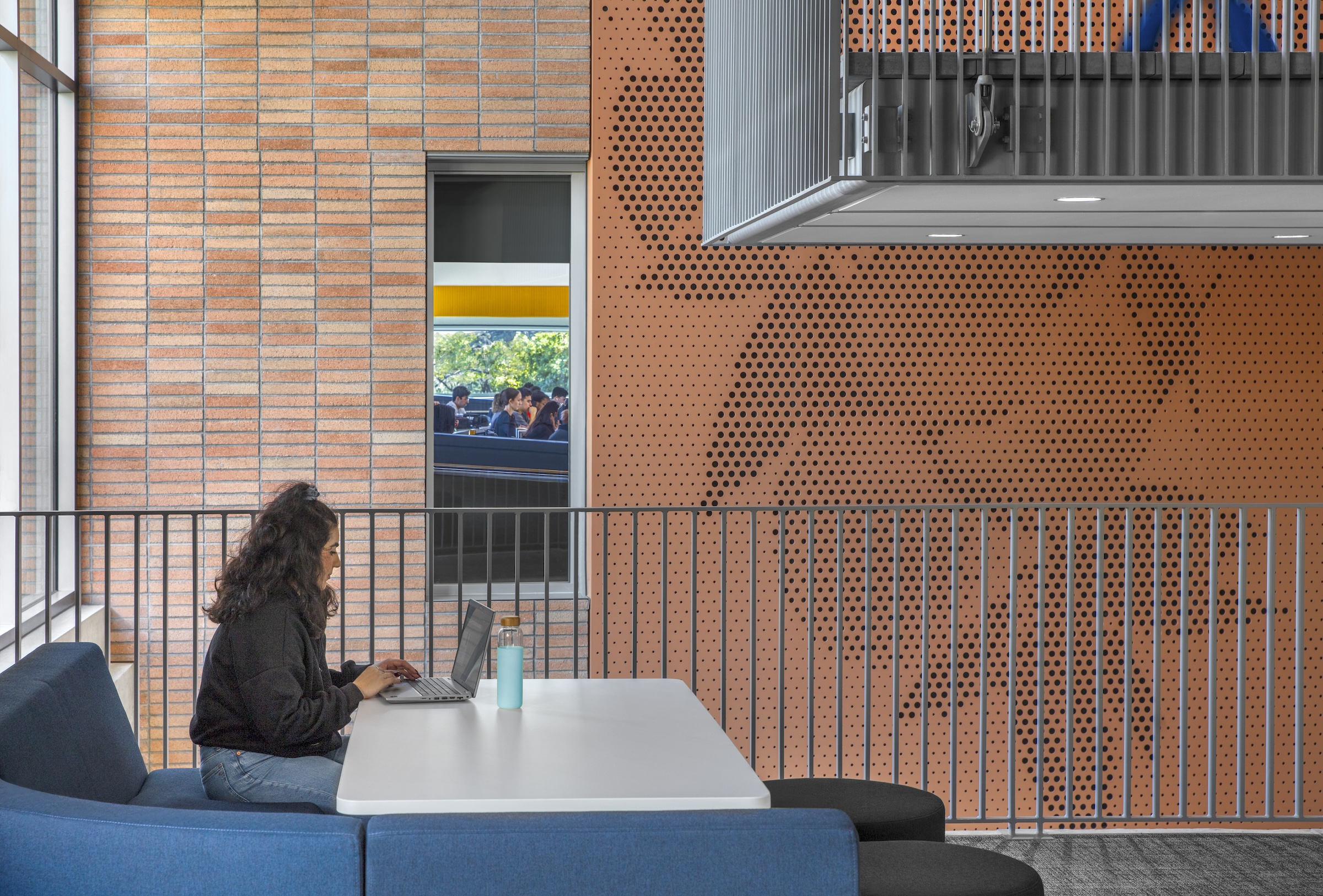
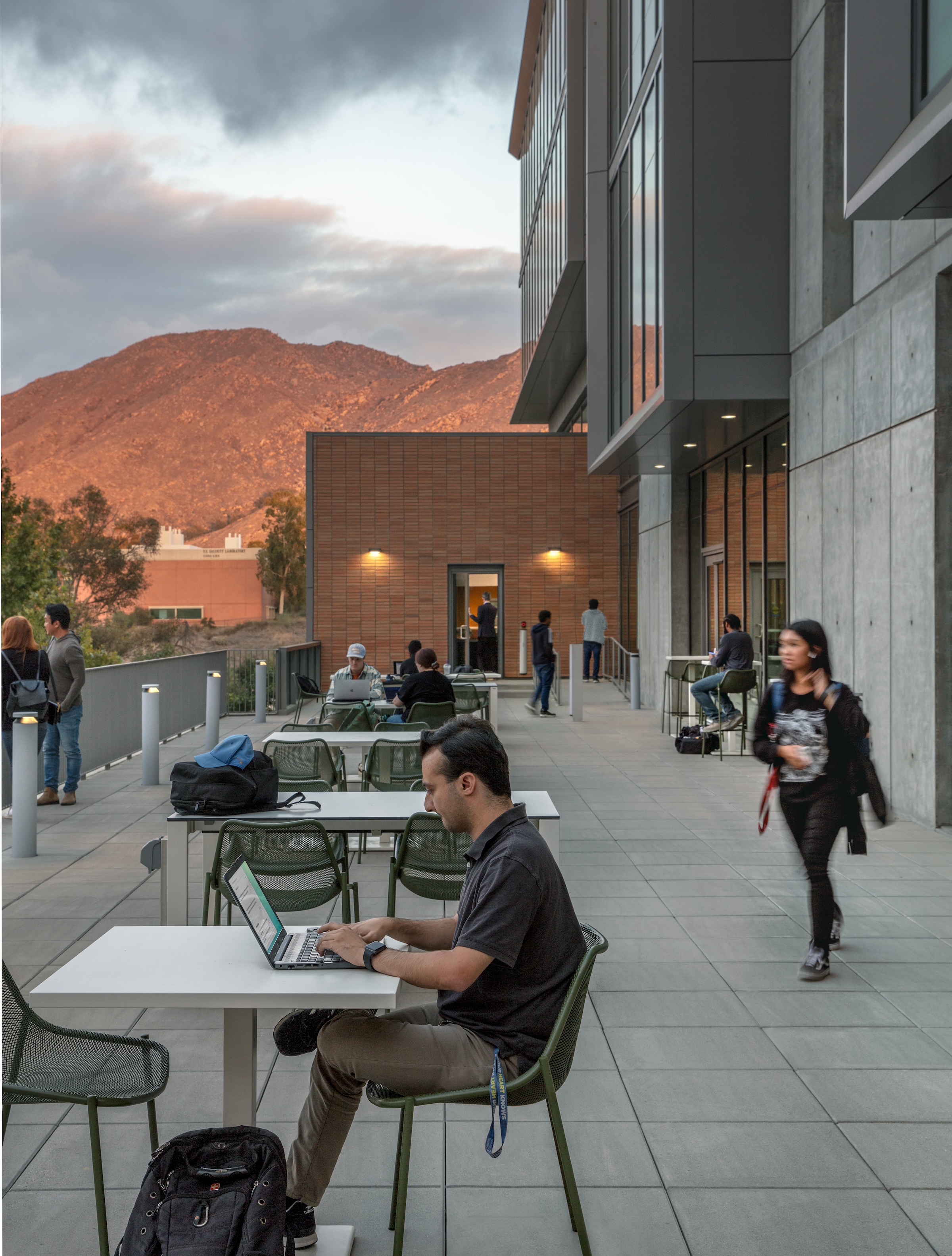
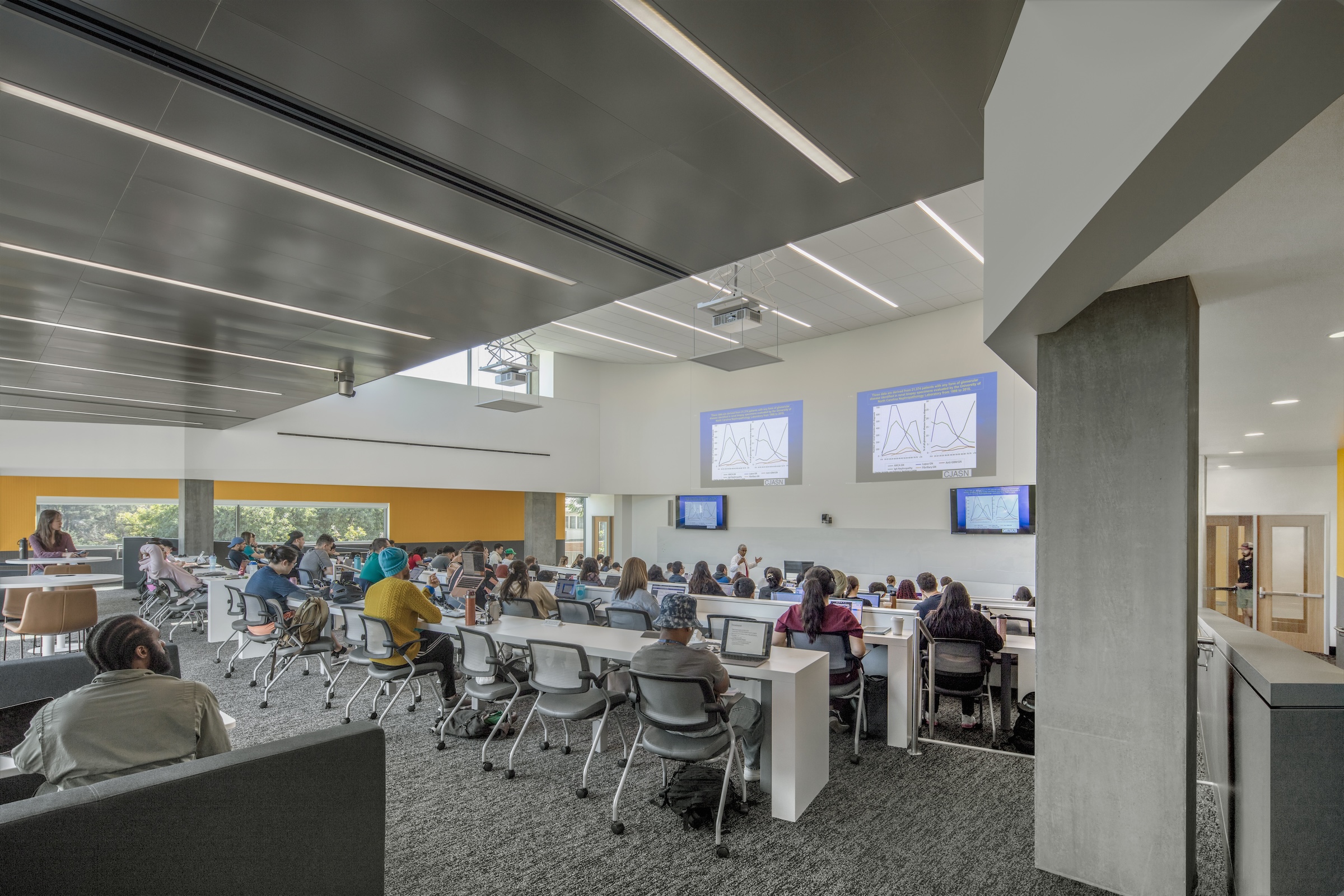
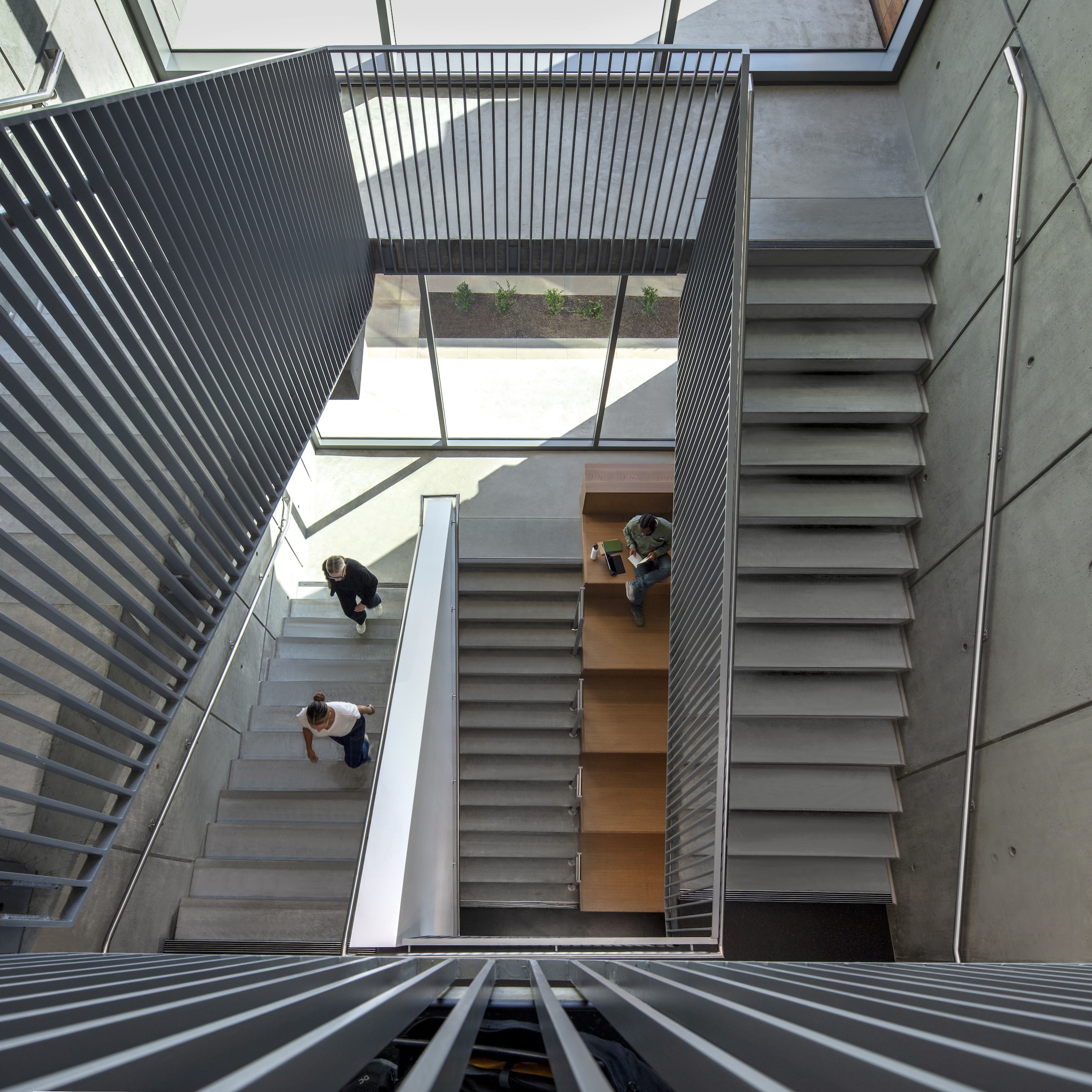
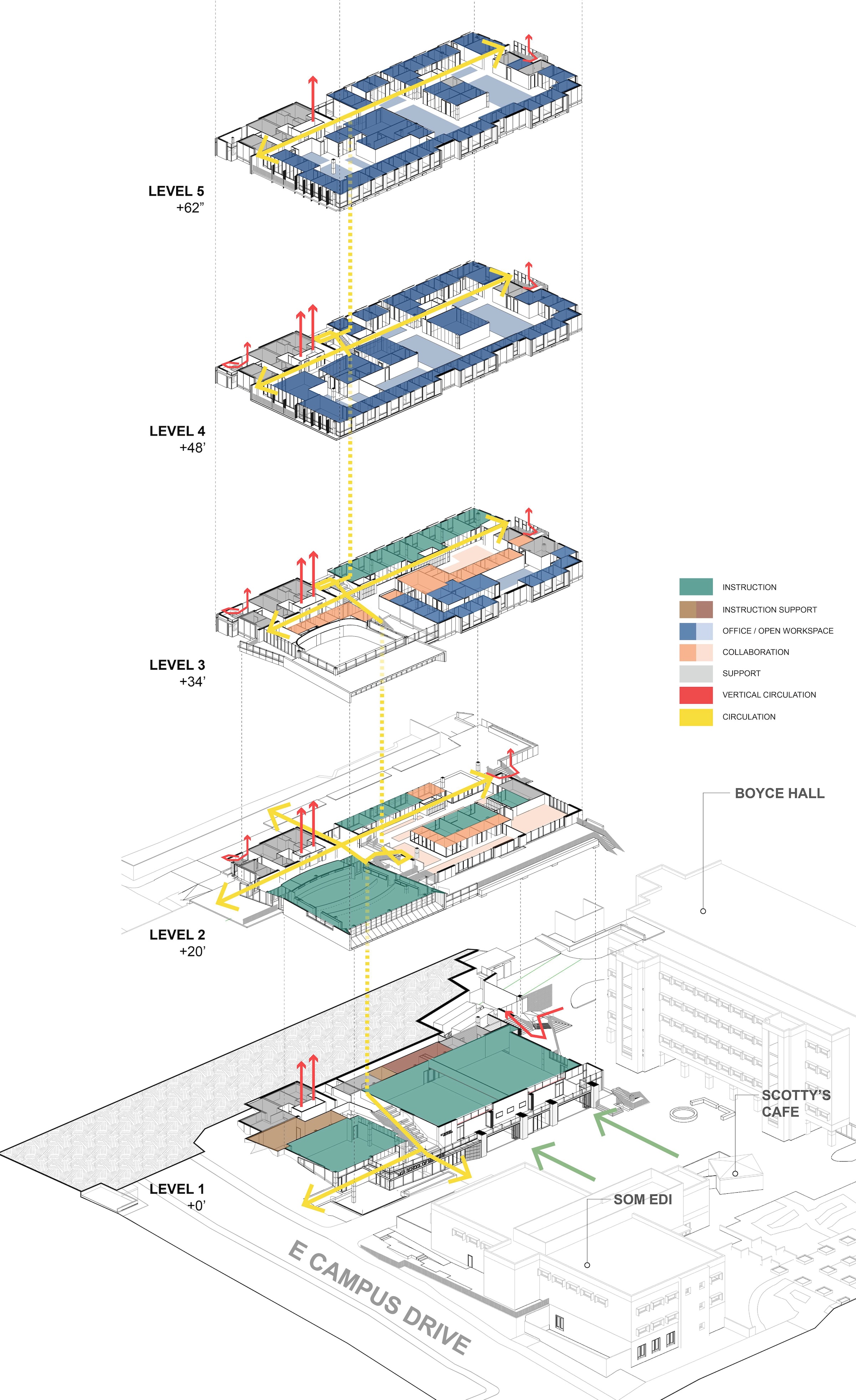
Related Stories
University Buildings | Aug 1, 2024
UC Riverside’s student health center provides an environment on par with major medical centers
The University of California, Riverside's new Student Health and Counseling Center (SHCC) provides a holistic approach to wellness for students throughout the UC Riverside campus. Designed by HGA and delivered through a design-build partnership with Turner Construction Company, SHCC provides healthcare offerings in an environment on par with major medical centers.
Student Housing | Jul 31, 2024
The University of Michigan addresses a decades-long student housing shortage with a new housing-dining facility
The University of Michigan has faced a decades-long shortage of on-campus student housing. In a couple of years, the situation should significantly improve with the addition of a new residential community on Central Campus in Ann Arbor, Mich. The University of Michigan has engaged American Campus Communities in a public-private partnership to lead the development of the environmentally sustainable living-learning student community.
Adaptive Reuse | Jul 30, 2024
Empty mall to be converted to UCLA Research Park
UCLA recently acquired a former mall that it will convert into the UCLA Research Park that will house the California Institute for Immunology and Immunotherapy at UCLA and the UCLA Center for Quantum Science and Engineering, as well as programs across other disciplines. The 700,000-sf property, formerly the Westside Pavilion shopping mall, is two miles from the university’s main Westwood campus. Google, which previously leased part of the property, helped enable and support UCLA’s acquisition.
Smart Buildings | Jul 25, 2024
A Swiss startup devises an intelligent photovoltaic façade that tracks and moves with the sun
Zurich Soft Robotics says Solskin can reduce building energy consumption by up to 80% while producing up to 40% more electricity than comparable façade systems.
Great Solutions | Jul 23, 2024
41 Great Solutions for architects, engineers, and contractors
AI ChatBots, ambient computing, floating MRIs, low-carbon cement, sunshine on demand, next-generation top-down construction. These and 35 other innovations make up our 2024 Great Solutions Report, which highlights fresh ideas and innovations from leading architecture, engineering, and construction firms.
University Buildings | Jul 17, 2024
University of Louisville Student Success Building will be new heart of engineering program
A new Student Success Building will serve as the heart of the newly designed University of Louisville’s J.B. Speed School of Engineering. The 115,000-sf structure will greatly increase lab space and consolidate student services to one location.
K-12 Schools | Jul 15, 2024
A Cleveland suburb opens a $31.7 million new middle school and renovated high school
Accommodating 1,283 students in grades 6-12, the Warrensville, Ohio school complex features flexible learning environments and offers programs ranging from culinary arts and firefighting training to e-sports.
Adaptive Reuse | Jul 12, 2024
Detroit’s Michigan Central Station, centerpiece of innovation hub, opens
The recently opened Michigan Central Station in Detroit is the centerpiece of a 30-acre technology and cultural hub that will include development of urban transportation solutions. The six-year adaptive reuse project of the 640,000 sf historic station, created by the same architect as New York’s Grand Central Station, is the latest sign of a reinvigorating Detroit.
K-12 Schools | Jul 1, 2024
New guidelines for securing schools and community spaces released by the Door Security and Safety Foundation
The Door Security and Safety Foundation (DSSF), in collaboration with Door and Hardware Institute (DHI), recently released of “Are Your Door Openings Secure?.” The document provides guidelines to equip school administrators, building management personnel, and community leaders with a clear roadmap to create a secure and safe environment.
University Buildings | Jun 28, 2024
The American University in Cairo launches a 270,000-sf expansion of its campus in New Cairo, Egypt
In New Cairo, Egypt, The American University in Cairo (AUC) has broken ground on a roughly 270,000-sf expansion of its campus. The project encompasses two new buildings intended to enhance the physical campus and support AUC’s mission to provide top-tier education and research.


